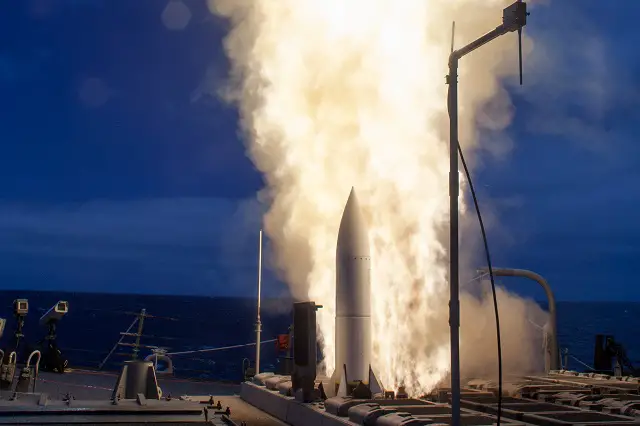Breaking news
Raytheon SM-6 Missiles Make History in Long-Range, Supersonic Tests.
| 2014
 USS John Paul Jones (DDG 53) (Picture: US Navy) |
|||
The first
three tests, conducted under the Naval Integrated Fire Control-Counter
Air (NIFC-CA) mission area, pitted SM-6 interceptors against subsonic,
low-altitude target drones flying so far from the “threatened”
ship that they were literally beyond the horizon. Under NIFC-CA, U.S.
Navy ships operate a networked system of sensors, aircraft and weapons
like the SM-6, which is designed to strike targets the ship can’t
see with its own ‘eyes.’ Capt. Andrew Hesser, skipper of USS Chancellorsville (CG-62), told the U.S. Naval Institute News that NIFC-CA was a “big deal” and a “hugely important capability, because it extends the battle space.” In the final test, an SM-6 intercepted a high-altitude target drone traveling at supersonic speeds. The four back-to-back flight test successes moved the SM-6 program closer to full operational capability. “Combatant commanders want more deployed,” said Campisi, who called the SM-6 the U.S. Navy's only missile with enhanced anti-air warfare capability. “We continue to exceed our cost reduction targets, allowing the Navy to increase order quantities even in a budget-constrained environment." Raytheon was awarded $275 million in June for the procurement of 93 additional SM-6s. The company has delivered more than 100 SM-6 interceptors to the U.S. Navy. The missile’s final assembly takes place at Raytheon’s state-of-the-art SM-6 and SM-3 all-up-round production facility at Redstone Arsenal in Huntsville, Ala. |
|||




















